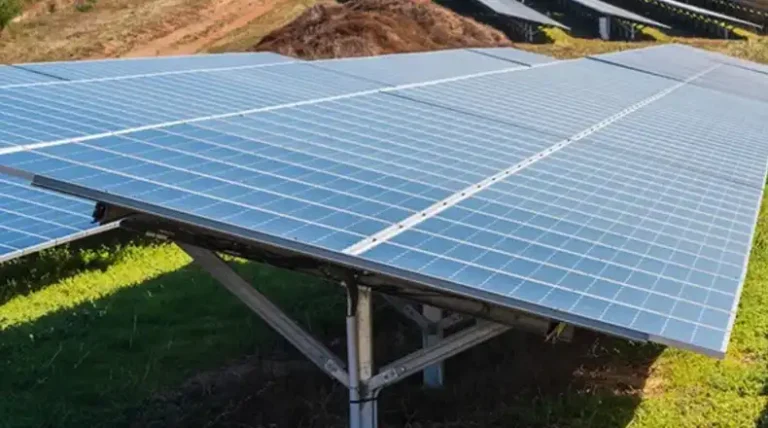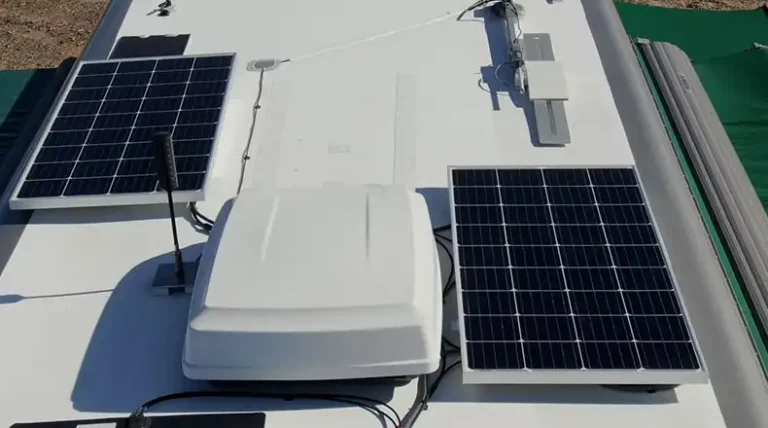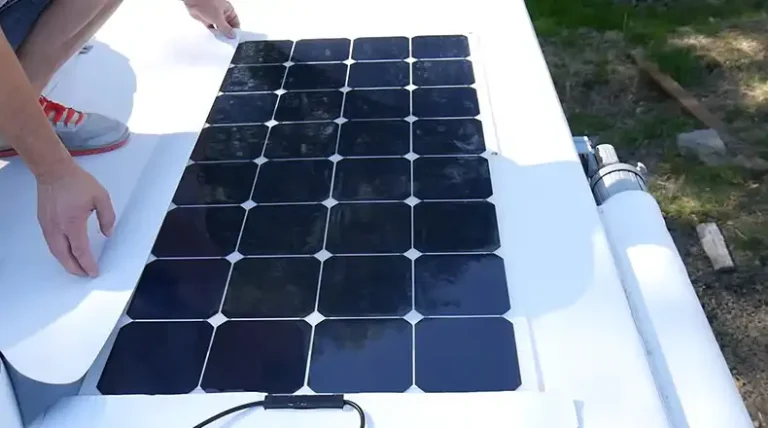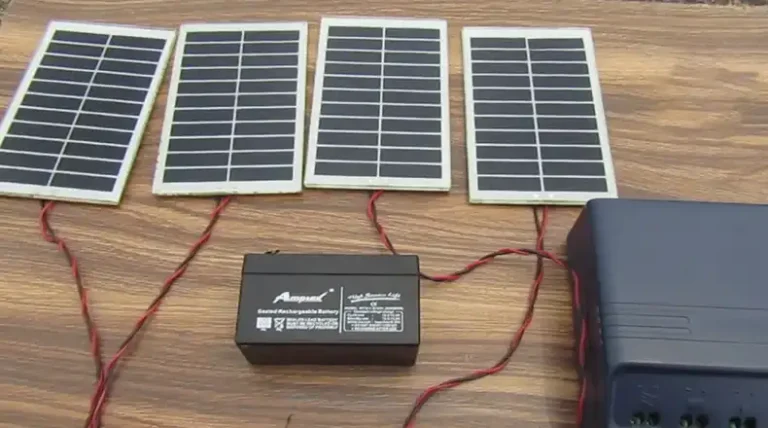Do Solar Panels Add A Radiant Barrier To The Roof?
In the sweltering heat of summer, keeping your home cool and comfortable can be a real challenge. As solar panels absorb the sunlight and convert it to energy, you might take it as an option to keep your home cool. But do solar panels add a radiant barrier to the roof?
The short answer is yes, solar panels can effectively act as a radiant barrier on your roof, helping to reduce the amount of heat absorbed by your home. By reflecting and dissipating the sun’s radiant energy, solar panels can contribute to a cooler and more energy-efficient living space.
In this guide, we’ll explore the science behind radiant barriers, explore the benefits of solar panels in this regard, and provide practical tips for maximizing their cooling potential. So keep reading if you’re considering solar panel installation or simply curious about this topic.
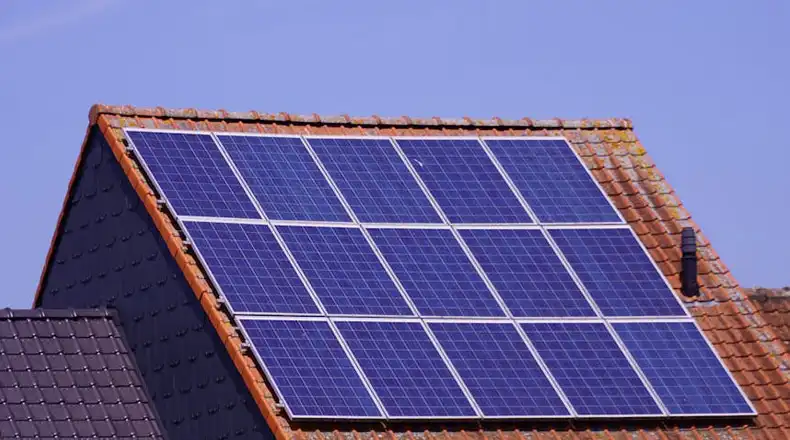
What is a Radiant Barrier?
Before I start explaining how solar panels can act as a radiant barrier, it’s essential to understand what a radiant barrier is and how it works. A radiant barrier is a highly reflective material designed to reflect radiant heat away from a surface, such as a roof or attic.
Radiant heat is a type of heat transfer that occurs through electromagnetic waves, such as those emitted by the sun. When these waves strike a surface, they can be absorbed, reflected, or transmitted, depending on the properties of the material.
Radiant barriers work by reflecting a significant portion of the radiant heat away from the surface they are installed on, preventing it from being absorbed and transferred into the living space below. This can result in a cooler and more comfortable indoor environment, reducing the need for excessive air conditioning and potentially lowering energy costs.
How Do Solar Panels Act as a Radiant Barrier?
Solar panels are designed to absorb sunlight and convert it into electrical energy through the photovoltaic effect. However, in the process of capturing solar radiation, they also reflect a significant portion of the sun’s radiant heat.
The reflective properties of solar panels are primarily due to their construction materials and design. Most solar panels are made of crystalline silicon cells encased in a tempered glass front and a protective backsheet. The glass surface is highly reflective, and the backsheet is often coated with a reflective material or designed to reflect radiant heat.
When solar panels are installed on a roof, they create a gap between the panels and the roof surface. This gap acts as an air cavity, further enhancing the radiant barrier effect. The reflected radiant heat gets trapped in this cavity, preventing it from being absorbed by the roof and transferred into the living space below.
Additionally, the installation of solar panels on a roof can provide shading, which further reduces the amount of direct sunlight and radiant heat that reaches the roof surface. This shading effect can be particularly beneficial in hot climates or during the summer months when the sun’s intensity is at its peak.
Benefits of Solar Panels as a Radiant Barrier
Using solar panels as a radiant barrier offers several benefits beyond just reducing heat absorption and promoting a cooler living space. Here are some of the key advantages:
- Energy Savings: By reducing the amount of heat entering your home, solar panels can help lower the energy consumption required for cooling systems like air conditioners. This can lead to significant cost savings on your energy bills, especially during the hottest months of the year.
- Increased Comfort: A cooler living environment can enhance your overall comfort levels, making it easier to relax and enjoy your home without feeling excessively hot or uncomfortable.
- Extended Roof Life: Excessive heat can accelerate the aging process of roofing materials, leading to premature deterioration and the need for costly repairs or replacements. By acting as a radiant barrier, solar panels can help protect your roof from the damaging effects of radiant heat, potentially extending its lifespan.
- Environmental Benefits: Reducing energy consumption for cooling purposes can lower your carbon footprint and contribute to a more sustainable lifestyle. Solar panels not only generate clean energy but also help minimize the need for energy-intensive cooling methods.
- Versatility: Unlike traditional radiant barriers, which require separate installation, solar panels serve a dual purpose: generating renewable energy while simultaneously acting as a radiant barrier. This versatility makes them a cost-effective and efficient solution for homeowners seeking both energy savings and improved indoor comfort.
Tips to Maximize the Radiant Barrier Effect of Solar Panels
While solar panels inherently provide radiant barrier benefits, there are several factors to consider to maximize their effectiveness:
- Panel Orientation: The optimal orientation for solar panels to act as an effective radiant barrier is to have them installed parallel to the roof surface, creating a consistent air gap between the panels and the roof. This allows for the most efficient reflection and dissipation of radiant heat.
- Air Gap Size: The size of the air gap between the solar panels and the roof surface can influence the radiant barrier effect. Generally, a larger air gap (within reasonable limits) can enhance the radiant heat reflection and improve the overall cooling performance.
- Roof Color and Material: The color and material of your roof can also impact the radiant barrier effect. Lighter-colored roofs tend to reflect more heat than darker ones, and certain roofing materials may be more effective at dissipating heat than others.
- Ventilation: Proper ventilation in the attic or roof space can further enhance the cooling benefits of solar panels acting as a radiant barrier. Adequate airflow can help dissipate any trapped heat, ensuring optimal temperature regulation.
- Panel Maintenance: Keeping your solar panels clean and free from dirt, debris, or shading obstructions can help maintain their reflective properties and ensure optimal radiant heat rejection.
Real-World Examples and Data about Using Solar Panels as a Radiant Barrier
To further illustrate the radiant barrier effect of solar panels, let’s explore some real-world examples and data:
Case Study 1
In a study conducted by the Florida Solar Energy Center, researchers found that a residential home with solar panels installed on the roof experienced a 38% reduction in cooling energy consumption compared to a similar home without solar panels. This energy savings was attributed to the radiant barrier effect of the solar panels, which helped reduce heat gain through the roof. Click Here to read the full report.
Case Study 2
A research project by the National Renewable Energy Laboratory (NREL) analyzed the impact of solar panels on roof temperatures in different climates. The study found that in hot and sunny conditions, the temperature underneath the solar panels was significantly lower (up to 30°F or 17°C cooler) compared to the roof surface without solar panels, demonstrating the radiant barrier effect. Although their research is about growing vegetables under solar panels, it proves that the temperature is lower under solar panels. Click Here to read the full report.
Temperature Measurements
Various homeowners and solar panel installers have reported temperature differences between the roof surface and the living space below after installing solar panels. These anecdotal accounts often mention a noticeable reduction in indoor temperatures, especially during peak sun hours, highlighting the radiant barrier benefits of solar panels.
Energy Savings Data
While energy savings can vary based on factors like climate, home size, and energy efficiency measures, many solar panel owners have reported substantial reductions in their cooling costs after installation. Some homeowners have reported savings of up to 20% or more on their energy bills during the summer months, attributable in part to the radiant barrier effect of their solar panels.
Summary
Solar panels can indeed act as an effective radiant barrier on your roof, helping to reduce heat absorption and promote a cooler living environment. By reflecting and dissipating radiant heat, solar panels offer multiple benefits, including energy savings, increased comfort, extended roof life, and environmental advantages. If you have any further questions or need additional guidance, feel free to leave a comment below. We’re here to help you navigate the world of solar energy and radiant barriers, ensuring you make informed decisions for a cooler, more sustainable living experience. Thank you for reading, and we wish you all the best in your journey towards energy efficiency and comfort!
You May Also Ask
What Is the Ideal Air Gap Size Between Solar Panels and the Roof?
The ideal air gap size between solar panels and the roof can vary, but generally, a gap of 4 to 6 inches (10 to 15 cm) is recommended for optimal radiant barrier performance. This gap allows for sufficient airflow and heat dissipation while still providing an effective radiant barrier.
Can Solar Panels Alone Completely Cool My Home?
No, solar panels alone cannot completely cool your home. While they provide a radiant barrier effect and help reduce heat absorption, they should be combined with other cooling methods, such as proper insulation, ventilation, and energy-efficient air conditioning systems, for optimal temperature regulation.
Do All Types of Solar Panels Act as Radiant Barriers?
Yes, most types of solar panels, including monocrystalline and polycrystalline silicon panels, can act as radiant barriers due to their reflective properties and the air gap created during installation. However, some panel technologies or installation methods may be more effective than others in this regard.
How Much Energy Can Be Saved by Using Solar Panels as Radiant Barriers?
The energy savings achieved by using solar panels as radiant barriers can vary depending on factors such as climate, home size, and existing insulation levels. However, studies have shown that cooling energy consumption can be reduced by up to 20% or more in some cases.
Is There Any Maintenance Required for Solar Panels to Function as Radiant Barriers?
While solar panels themselves require regular cleaning and maintenance to ensure optimal energy production, no specific maintenance is required for their radiant barrier function. However, ensuring proper ventilation and airflow in the attic or roof space can help maximize the radiant barrier effect.

